
Regardless of whether you’re a seasoned pro looking for a relatively low-cost ‘backup’ camera or a first-time buyer looking to make your budget stretch as far as possible, there’s plenty of value to be found in the second-hand market – especially if you know where to look and are prepared to do a bit of homework. This is especially true if you’re more concerned with the quality and value for money of your photographic equipment, rather than whether it happens to be the latest version or model on the market. Buying used needn’t take the gloss off your next purchase either – especially if the camera you’re interested in is in a ‘like new’ condition and comes in its original box with all the relevant accessories.
Of course, buying an older model does mean that you might have to be prepared to make a few compromises. For example, you might find some modern conveniences such as built-in Wi-Fi connectivity or touchscreen control absent, on top of which the camera’s effective resolution will probably be a little lower than that on more modern cameras. On the plus side though, your money will go further – enabling you, in effect, to step up a level with your purchase. If you really want to spend your had-earned cash on a brand new entry-level DSLR from Canon or Nikon then that’s fine, we’re not here to try to persuade you otherwise. However, for much the same money you could alternatively secure yourself an enthusiast-grade DSLR that’s a few years old. Or if you’re looking at the latest enthusiast DSLR, then buying used might instead secure you a slightly older full-frame model. Stepping up a level like this often comes with a range of other benefits, too, for example, a more advanced autofocus system with a greater number of AF points or greater scope to customise the way your camera is set up.
With this in mind we’ve pored over the websites and current stock of all the most reputable second-hand camera equipment specialists in the UK in order to identify some great bargains that are worth checking out. Let the search for your next ‘used’ camera begin…
Take-anywhere camera under £225
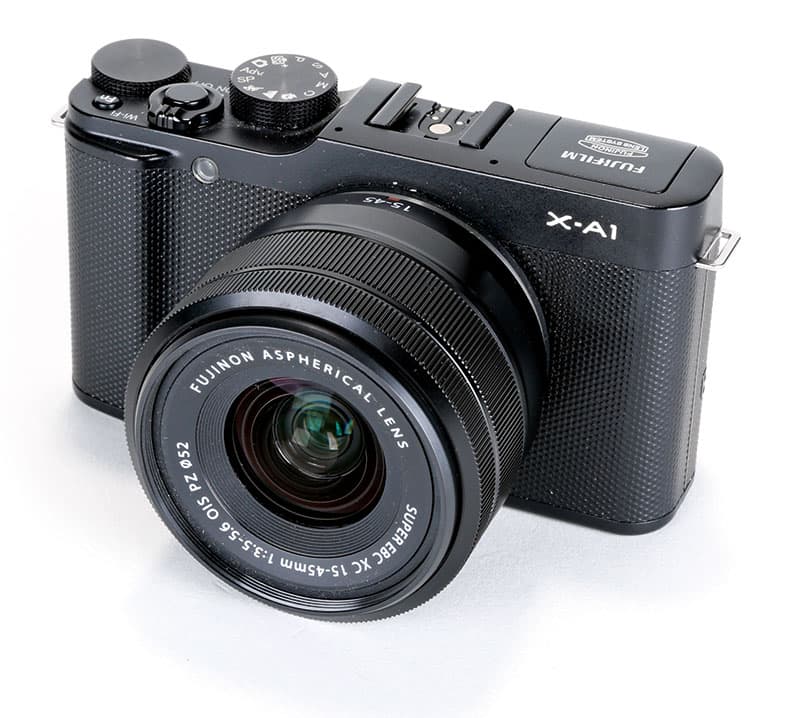
Fujifilm X-A1 with Fujinon XC15-45mm F3.5-5.6 OIS PZ
At a glance
- Price £233
- Sensor 16.3MP APS-C CMOS
- Sensitivity ISO 100-25,600
- Continuous shooting 5.6fps
- Video Full HD video at 30fps
- Rear display 3in, 920k-dot tiltable LCD
- Viewfinder No electronic viewfinder
Positioned as the entry point to Fujifilm’s premium X-series range, the X-A1 was the cheapest interchangeable-lens model in the range at the time of its release in 2013. As with other cameras in the X-series range, the X-A1 takes Fujifilm’s unique take on retro rangefinder design and combines it with modern digital camera technology to produce a camera that looks and feels great and is capable of producing great images, too. For those looking to invest in their first ‘proper’ interchangeable-lens camera, the X-A1 is easy to use but also provides plenty of scope to expand your skills.
At its heart, the X-A1 is built around a 16.3MP APS-C CMOS sensor and Fujifilm’s own EXR Processor II. Unlike the X-Trans sensor found in more advanced X-series models, the sensor inside the X-A1 employs a conventional Bayer colour filter array. This produces a maximum output of 4896 x 3264 pixels when shooting at full resolution in the sensor’s native 3:2 aspect, although you can of course lower the resolution when shooting JPEGs. The X-A1 also provides raw capture for more-advanced users who would prefer to process their own images. Exposure modes are plentiful, with PASM controls for experienced users being backed up by a range of fully automatic modes for point- and-shoot duties. The X-A1 also comes with a selection of Fujifilm’s proprietary ‘Film Simulation’ digital filters, which mimic the look of classic 35mm film stock from Fujifilm including Provia, Astia and Velvia. Note that later additions to the range, such as Classic Chrome, Acros and PRO Neg, aren’t available on the X-A1 as these were released after the X-A1 came out and can’t be added.
Features
In use the X-A1 is quick to start up and provides a useful burst speed of 5.6fps. Video capabilities, meanwhile, extend to 1080p Full HD video at up to 30fps for a maximum duration of 14 minutes. Shutter speed can be adjusted from 30sec to 1/4,000sec, while sensitivity ranges from ISO 100-25,600 (extended). There’s also built-in Wi-Fi connectivity that enables you to transfer images wirelessly to a connected smartphone or tablet via the Fujifilm Remote app. Note that the X-A1 does not support wireless remote control over the camera via Wi-Fi though.
The X-A1 is equipped with a 49-point contrast-detect autofocus system that provides fast and accurate focus when light is plentiful, although some focus-hunting can be expected when light levels drop. The X-A1 is well served with a range of focusing options including Multi-area, Single-point, Tracking, and Face detection.
Display and build quality
The back of the X-A1 is fitted with a 3in, 920k-dot tiltable display that can be angled up and down for shooting overhead or from the hip. While there’s no touchscreen functionality, the display is of good quality and plenty sharp enough to review your captured images effectively. In keeping with most other entry-level mirrorless cameras there’s no built-in electronic viewfinder, which means you’ll have to use the display to compose your images, which can occasionally be a little awkward in bright sunlight. The X-A1 also comes with a built-in pop-up flash, which sits under a panel on the left shoulder and is rated to 7m at ISO 200.
As with most Fujifilm X-series cameras, the X-A1 is solidly constructed and nicely finished. The finger grip on the front isn’t the largest, but does enable you to get a good hold of the camera thanks to its textured finish. The X-A1 is also an exceptionally easy camera to operate; buttons are large and well spaced, with the ever-useful ‘Q’ button providing instant access to a streamlined graphical menu from where you can directly adjust all of the camera’s most commonly used settings.
While a brand new X-A1 body and Fujifilm XC 15-45mm kit zoom cost around £530 at launch, reputable second-hand dealers such as MPB.com currently have stock of second- hand X-A1 bodies in ‘excellent’ condition for just £99. In addition it’s also possible to pick up ‘like new’ examples of the XC 15-45mm kit zoom for £134, while those looking for a more discreet set-up might want to consider the Fujifilm 27mm f/2.8 prime instead, which is available used in ‘excellent’ condition for as little as £209. Whichever lens option you decide on, building a second-hand package around the X-A1’s diminutive body certainly enables you to extract plenty of value for money while looking suitably stylish. You’ll love the images it produces too!
Also consider
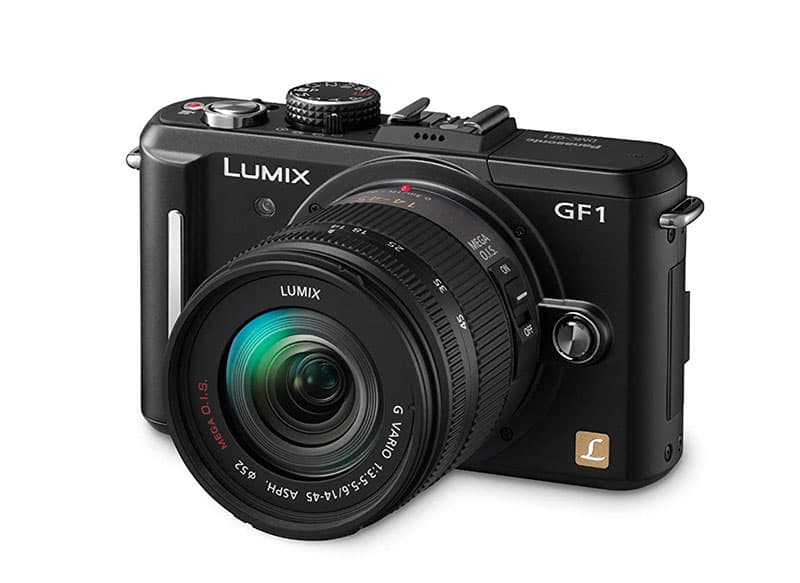
Panasonic Lumix GF1 with Lumix G Vario 14-45mm f/3.5-5.6 ASPH Mega OIS
At a glance
- Price £124
- Sensor 12.1MP Live MOS
- Sensitivity ISO 100-3200
- Continuous shooting 3fps
- Video 720p HD at 30fps
- Rear display 3in, 460k-dot LCD
- Viewfinder None
While a brand new GF1 would’ve cost you around £700 upon its release in 2009, it’s possible to pick up a second-hand example in ‘good’ condition along with a 14-45mm kit zoom for about £125. Given its age it comes as no great surprise to find that it lacks many modern conveniences such as built-in image stabilisation, Wi-Fi connectivity or 4K video capture. That said, there’s still plenty to like about it. Not least the fact that owning one gives you access to the extensive range of lenses available for Micro Four Thirds cameras.

Olympus PEN Lite E-PL3 with M.Zuiko ED 14-42mm f/3.5-5.6 EZ
At a glance
- Price £178
- Sensor 12.3MP Live MOS MFT
- Sensitivity ISO 200-12,800
- Continuous shooting 5.5fps
- Video 1080p Full HD at 60fps
- Rear display 3in, 460k-dot tiltable LCD
- Viewfinder None
Released in 2011, the E-PL3 was praised at the time for building on the strengths of its predecessor to deliver a stylish and generously featured little camera. Built around a 12.3MP Micro Four Thirds sensor, the E-PL3’s maximum continuous shooting speed is a more-than-respectable 5.5fps, while video capabilities max out at 1080p Full HD at 60fps. Autofocus is taken care of via a 35-point contrast-detect system that provides solid performance in good light. In addition, the E-PL3 also provides raw capture and the full complement of PASM shooting modes for more-experienced users, along with a fully automatic iAuto mode for more casual users.
Cheap APS-C DSLRs under £400
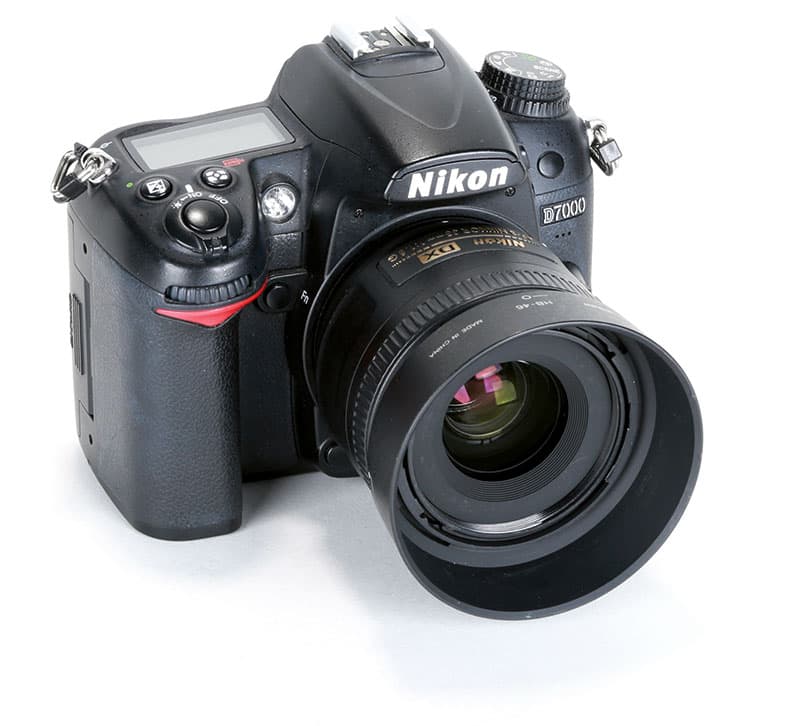
Nikon D7000 with AF-S DX Nikkor 35mm f/1.8G
At a glance
- Price £313
- Sensor 16.2MP APS-C CMOS
- Sensitivity ISO 100-25,600
- Continuous shooting 6fps
- Video 1080p Full HD video at 24fps
- Rear display 3in, 921k-dot LCD
- Viewfinder Pentaprism viewfinder, 100% coverage at 0.95x
The enthusiast-grade DSLR market has long been a highly competitive segment, with new models often benefiting from the ‘trickle down’ effect as manufacturers look to make their latest models more appealing by importing hardware and features directly from more advanced and expensive cameras. This is still as much the case today as it was in 2010 when the D7000 arrived on the scene.
Before the arrival of the D7000, the flagship model in Nikon’s DSLR range was occupied by the professional-grade, full-frame D3S. The only other full-frame DSLR offered by Nikon at the time was the popular D700. Nikon’s most advanced APS-C DSLR back then was the D300S, with the D90 from 2008 occupying the enthusiast-grade slot. Although commonly thought of as a direct replacement for the D90, the D7000 was actually much closer to the D300S in terms of its abilities.
Features
At its heart the D7000 is built around a 16.2MP APS-C sensor and a Nikon EXPEED 2 image processor. This enables the camera to shoot consecutively at a maximum rate of 6fps, while native sensitivity ranges from ISO 100-6400 – with expanded ‘Hi-1’ and ‘Hi-2’ settings taking things up to the equivalent of ISO 25,600. In addition to JPEG capture, the D7000 also offers the choice of recording still images in 12-bit or 14-bit raw files in the proprietary Nikon .NEF format.
Autofocus duties are handled by a 39-point AF system with nine cross-type sensors in the central area of the viewfinder. While this might not seem like a lot compared to contemporary enthusiast DSLRs (the current D7500 provides 51 AF points), we must remember that many current entry-level DSLRs still only have 11 AF points. The D7000 also benefits from the added flexibility of dual SD memory card slots, whereas the current D7500 somewhat bizarrely only gets one! Unfortunately the D7000 came out before built-in Wi-Fi connectivity became a standard.
Build quality
Encased within a magnesium alloy shell, the D7000 has a weighty feel to it. The handgrip, and indeed much of the front of the camera, is rubber coated for a secure grip while buttons are plentiful and intuitively placed. Image quality from the 16.2MP sensor is very good too, producing generally pleasing JPEGs with natural-looking colour.
At the time of writing Park Cameras has a selection of used D7000 bodies in ‘good’ condition for as little as £199, rising to £229 for one in ‘excellent’ condition with a shutter count under 13k. Add a lens like a 35mm f/1.8G DX wideangle prime in ‘excellent’ condition for £114, and a D7000 body and lens package comes in at well under £350 – not bad for an enthusiast-level DSLR that would’ve cost £999 body-only at launch.
Also consider
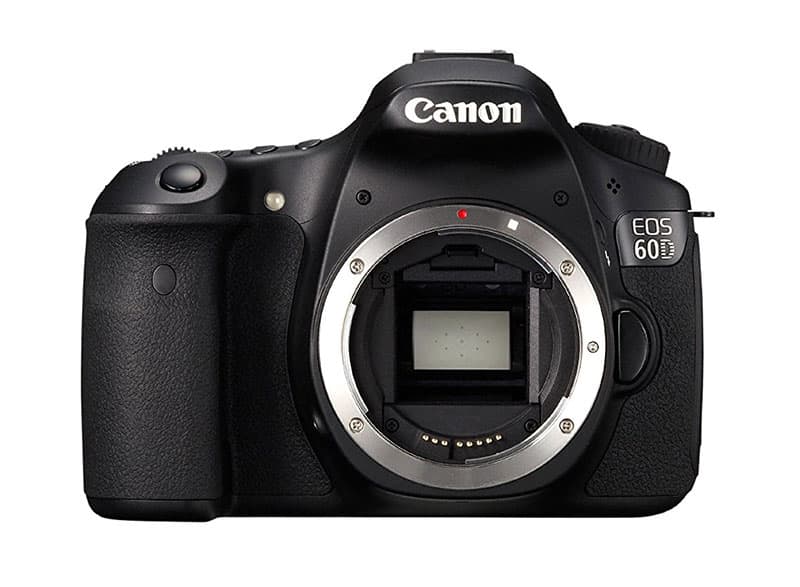
Canon EOS 60D with Canon EF-S 24mm f/2.8 STM Pancake
At a glance
- Price £293
- Sensor 18MP APS-C CMOS
- Sensitivity ISO 100-12,800
- Continuous shooting 5.3fps
- Video 1080p Full HD at 30fps
- Rear display 3in, 1.04m-dot vari-angle LCD
- Viewfinder Pentaprism, 96% coverage at 0.95x
Released in 2010 and positioned as an enthusiast-grade DSLR, the 60D is now available second-hand in ‘good’ condition with a lens for a fraction of its original £1,100 launch price. Built around an 18MP APS-C sensor and Canon’s DIGIC 4 image processor, the 60D further benefits from a pin-sharp vari-angle rear display, a nine- point AF system that uses all cross-type sensors, and a water- and dust-resistant protective shell. While it lacks built-in Wi-Fi connectivity, the 60D is compatible with Eye-Fi cards, which provides a usable workaround for the wireless transfer of captured images.
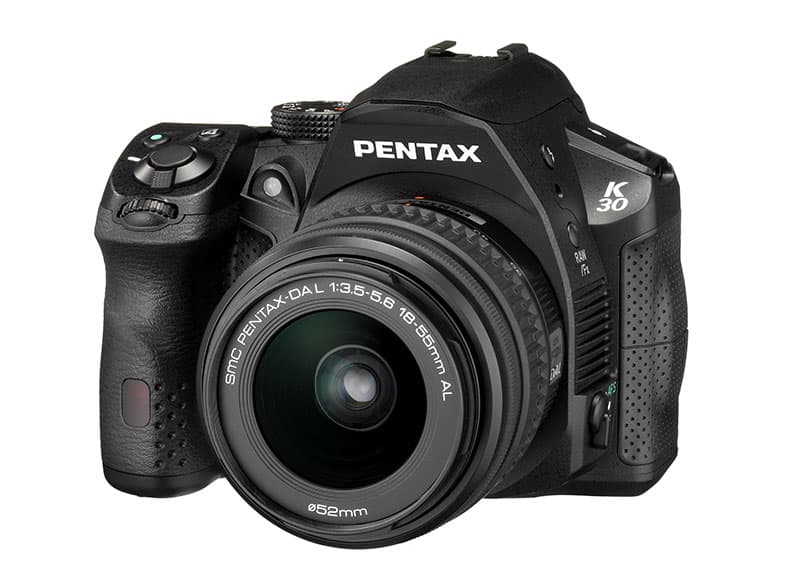
Pentax K-30 with 18-55mm f/3.5-5.6 AL
At a glance
- Price £259
- Sensor 16.3MP APS-C CMOS
- Sensitivity ISO 100-25,600
- Continuous shooting 6fps
- Video 1080p Full HD at 30fps
- Rear display 3in, 921k-dot LCD
- Viewfinder Pentaprism, 100% coverage at 0.92x
Pentax has long enjoyed a reputation for producing DSLRs that offer excellent value for money, and the K-30 is no exception. Released in 2012, the K-30 was notable for offering a range of features not normally found at its price point. This includes things like built-in sensor-shift image stabilisation technology, a 100% pentaprism viewfinder and a weather-resistant build quality. In addition, it provides all the tools and functions expected of an upper entry-level range DSLR, including raw capture, dual control wheels and PASM exposure mode options. While the K-30’s effective resolution of 16.3MP is perhaps a little lacking today, in most other respects the K-30 remains generously featured and as such provides excellent value for money.
Full-frame bargains under £1050

Canon EOS 5D Mark III and EF 50mm f/1.8 II
At a glance
- Price £1028
- Sensor 22.3MP full-frame CMOS
- Sensitivity ISO 50-102,600
- Continuous shooting 6fps
- Video 1080p Full HD video at 30fps
- Rear display 3.2in, 1.04m-dot LCD
- Viewfinder Pentaprism viewfinder, 100% coverage at 0.71x
Canon’s full-frame EOS 5D range has been in production since the release of the original 12.8MP EOS 5D in 2005. While subsequent models in the line have evolved greatly in terms of their core hardware and technology, the 5D range as a whole remains committed to providing photographers with the same professional-grade image quality, features and build quality of Canon’s flagship full-frame DSLR models but in a smaller and less expensive body. For this reason the 5D series has long been one of the most popular DSLR ranges on the market for both professionals and advanced enthusiasts alike.
Features
Released in 2012, the 5D Mark III was launched as the successor to 2008’s multi award-winning 5D Mark II model that was notable at the time for being the first DSLR to offer 1080p Full HD video capture. While the 5D Mark II was immensely popular in its day, by 2012 it was starting to look a little dated – not least in terms of its nine-point AF system. The 5D Mark III therefore brought a timely raft of upgraded hardware to the table, some of which was inherited directly from the then flagship Canon EOS-1D X. This includes the 5D Mark III’s 61-point autofocus system that incorporates 41 cross-type sensors, along with a range of built-in and adjustable autofocus ‘presets’ that can be used to set the camera up for optimum focus performance in a range of scenarios that involve moving subjects.
While the 5D Mark II’s 21.1MP sensor represented a fairly significant boost in resolution over the 12.8MP sensor of the original 5D, the Mark III provided a more modest increase to 22.3MP. Unlike its predecessor though, the 5D Mark III’s sensor benefits from the ‘gapless’ microlens design employed by the 1D X. This was actually considered a fairly big deal at the time of the 5D Mark III’s launch, as the gapless design enables more light to reach the sensor, thereby improving dynamic range and reducing noise. As a result of the change to gapless, the 5D Mark III was able to offer a native sensitivity range of ISO 100-25,600 – two stops higher than its predecessor’s top setting of ISO 6400. Furthermore, the 5D Mark III also provides expanded sensitivity settings equivalent to ISO 50-102,400.
The 5D Mark III is equipped with a single DIGIC 5+ image processor (the 1D X got two), which provides a notable boost to overall performance compared to the 5D Mark II. Continuous shooting, for example, is a solid 6fps – compared to 3.9fps on the 5D Mark II. The ability to record 1080p Full HD video was perhaps the biggest draw of the 5D Mark II, and while the 5D Mark III doesn’t reinvent the wheel in terms of its video capabilities it does offer a top capture rate of 60fps – compared to the 24fps maximum setting of the Mark II. While the current 5D Mark IV betters this with 4K video capture, a second-hand 5D Mark IV will currently set you back around £2,000, around double the cost of a used Mark III.
Build quality and handling
In terms of construction and build quality, the 5D Mark III is housed within a weather-sealed magnesium alloy shell and feels very much like a professional-grade DSLR should, which is to say a little weighty but incredibly solid. Despite this the 5D Mark III sits nicely in the hand thanks to its deep handgrip. Buttons are plentiful too, much as you’d expect, but also well spaced and clearly labelled. Meanwhile, the in-camera menu offers plenty of advanced tools and customisation options that allow you to set the camera up exactly as you want it.
While the EOS 5D Mark III launched with a body-only price of £3,000, it’s now possible to find second-hand examples for as low as £969 from the likes of MPB.com. For this price you can expect a camera in ‘good’ condition with a frame count of between 30k and 80k. Pair this with something like the Canon EF 50mm f/1.8 II standard prime for an additional £59 and the complete package comes in at just over £1,000 – less than half the 5D Mark III’s original body-only price.
Also consider
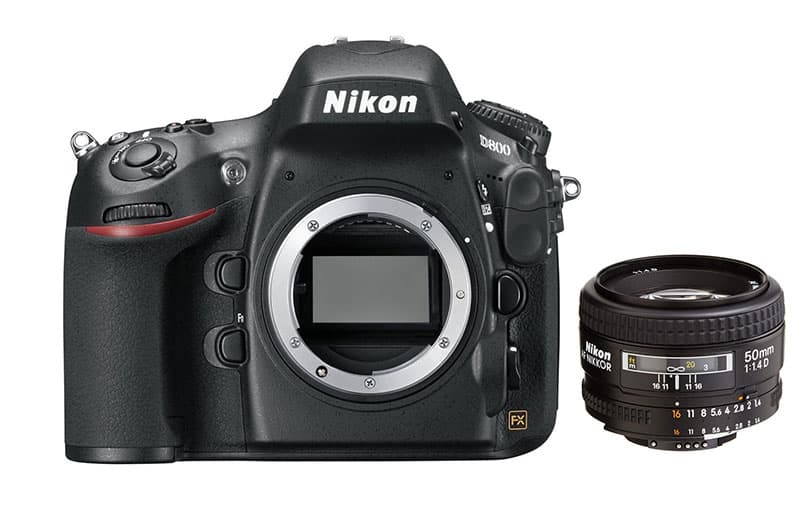
Nikon D800 with AF Nikkor 50mm f/1.4D
At a glance
- Price £818
- Sensor 36.8MP full-frame CMOS
- Sensitivity ISO 50-25,600
- Continuous shooting 4fps
- Video 1080p Full HD at 30fps
- Rear display 3.2in, 921k-dot LCD
- Viewfinder Pentaprism, 100% coverage at 0.7x
The big draw of the D800 upon its release in 2012 was its 36.8MP full-frame sensor. At the time this was the highest resolution of any full-frame camera on the market. While that’s obviously no longer the case these days, the D800 remains a powerful camera with well above average resolution. It launched with a body-only price of £2,599, but second-hand examples of the D800 can currently be found for as little as £659 in ‘good’ condition or £749 in ‘excellent’ condition. For those photographers seeking a high-resolution, full-frame DSLR without the associated high costs, a decent used D800 could well make for a solid and more affordable investment over the Nikon D810.
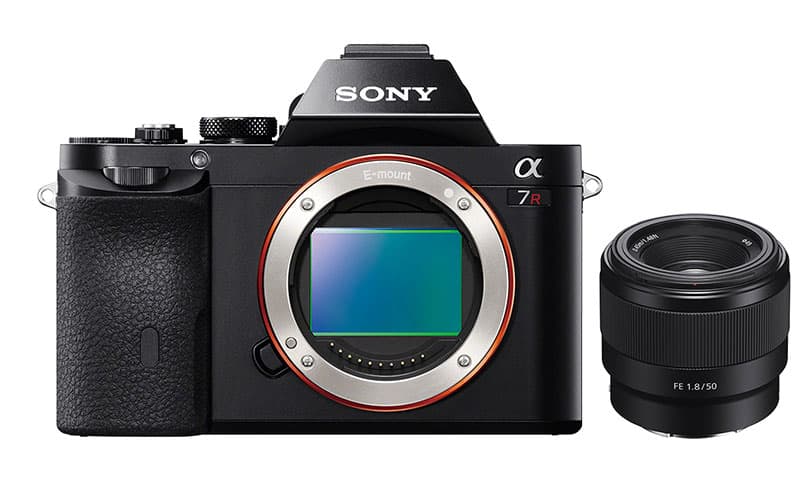
Sony Alpha 7R with Sony FE 50mm F1.8
At a glance
- Price £758
- Sensor 36.4MP full-frame CMOS
- Sensitivity ISO 50-25,600
- Continuous shooting 4fps
- Video 1080p Full HD at 24fps
- Rear display 3in, 921k-dot LCD
- Viewfinder 2.35m-dot EVF
The release of the Sony Alpha 7 and Alpha 7R models in 2013 was something of a watershed moment in that they finally brought full-frame mirrorless cameras to the masses – until then the only other compact full-frame option was the uber-expensive Leica M9. While the base A7 model sported a highly capable 24.3MP full-frame sensor, the big draw of the A7R was its 36.4MP chip, making it an ideal choice for those seeking billboard-sized resolution. While a brand-new Sony A7R body would’ve set you back around £1,700 at the time of its launch, it’s possible to pick up a used A7R in ‘good’ condition for as little as £614. If you’re looking for maximum resolution with minimum outlay, then the A7R ticks all the right boxes.
Buying second-hand
Here we reveal a few tips for buying second-hand equipment
Second-hand rating system
In order to help you with your purchase, second-hand camera dealers employ a grading scale that indicates the condition of the cameras they have for sale. While the terminology does vary a bit between the various retailers, the most commonly used terms to describe used equipment are: ‘Mint’ or ‘Like New’, ‘Excellent’, ‘Good’ and ‘Well Used’ or ‘Fair’. Some companies – Wex Photo Video, for example – use a numerical grading system instead. Either way, ‘Mint’, ‘Like New’ or ‘10’ is used to describe a camera that is scratch-free and in perfect working order – essentially the same condition as it was when new. ‘Excellent’ describes a camera in perfect working order, but with minor cosmetic marks. ‘Good’ describes a camera that has been well looked after, but which shows some obvious signs of use. Last, ‘Fair’ or ‘Well Used’ is used to describe a camera in good working order, but which bears obvious signs of use and age. In all cases, the retailer will have checked the sensor for dust and cleaned it if necessary.
Shutter count
Another useful indicator to find out, which can help you to gauge the condition of a second-hand camera, is the shutter count. This describes how many times the shutter has been opened and closed and is useful to know because the delicate blades that make up a camera’s shutter mechanism have a limited lifespan, after which expensive repairs may be required. Knowing a camera’s shutter count therefore not only provides a good idea of how heavily it has been used by the previous owner, but also gives an indication of how much life is left in it.
Warranties and guarantees
If you decide to buy a second-hand camera, then we’d strongly advise sticking with an established and reputable firm. This includes the likes of Wex Photo Video, Camera World, MPB, Park Cameras, Ffordes, Grays of Westminster and the London Camera Exchange. Reputable specialists like these will generally offer a short guarantee on all used cameras – usually for a period of three to six months. This is in addition to any consumer protection rights you are legally entitled to. While buying privately can usually save you some money over a second-hand specialist you’re unlikely to get any such guarantees.









